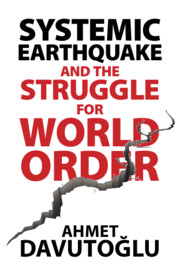Book contents
- Systemic Earthquake and the Struggle for World Order
- Systemic Earthquake and the Struggle for World Order
- Copyright page
- Dedication
- Contents
- Foreword
- Acknowledgments
- Abbreviations
- Introduction: Conceptual and Methodological Framework
- Part I Systemic Earthquake: Analysis and Consequences of World (Dis)Order
- 1 Traditional, Modern, and Global “World Orders”
- 2 The Roots of World (Dis)Order: Geopolitical, Security, Economic, and Structural Earthquakes in the Post-Cold War Era
- 3 Systemic Earthquake: Fragile National, Regional, and Global Structures
- 4 Systemic Earthquake: Global Powers and the “Multiple Balances of Power” System
- Part II A New Vision: Inclusive Governance
- Notes
- Bibliography
- Index
4 - Systemic Earthquake: Global Powers and the “Multiple Balances of Power” System
from Part I - Systemic Earthquake: Analysis and Consequences of World (Dis)Order
Published online by Cambridge University Press: 09 January 2020
- Systemic Earthquake and the Struggle for World Order
- Systemic Earthquake and the Struggle for World Order
- Copyright page
- Dedication
- Contents
- Foreword
- Acknowledgments
- Abbreviations
- Introduction: Conceptual and Methodological Framework
- Part I Systemic Earthquake: Analysis and Consequences of World (Dis)Order
- 1 Traditional, Modern, and Global “World Orders”
- 2 The Roots of World (Dis)Order: Geopolitical, Security, Economic, and Structural Earthquakes in the Post-Cold War Era
- 3 Systemic Earthquake: Fragile National, Regional, and Global Structures
- 4 Systemic Earthquake: Global Powers and the “Multiple Balances of Power” System
- Part II A New Vision: Inclusive Governance
- Notes
- Bibliography
- Index
Summary
In the bipolar world of the Cold War era, power shifts that might have impacted the international system were generally regulated to the context of US-USSR summits and negotiations, with decisions taken at the super-power level cascading down to the lower strata of the power pyramid. International crises and ways to resolve them were shaped by the ability of superpowers to balance each other and exercise control over the players in their own pole.
The end of the Cold War shook the pyramidal relationship networks of that era’s static balance of power, paving the way for new equations and balances of power. In a sense, the stances and power rivalries of the global powers within this dynamic network of relationships during the post-Cold War earthquakes have laid the seismic substructure for the systemic earthquake that rumbles on today. The movements these countries have undergone within themselves during this process and their attempts to adapt to the new era have had a direct impact on the direction and force of the tides and turbulence in the international system.
In the fourth chapter the characteristics of the multiple powers system shaped by the response of global powers (US, EU, Russia and China) to these earthquakes are analysed.
Keywords
- Type
- Chapter
- Information
- Systemic Earthquake and the Struggle for World OrderExclusive Populism versus Inclusive Democracy, pp. 88 - 128Publisher: Cambridge University PressPrint publication year: 2020
- 1
- Cited by

